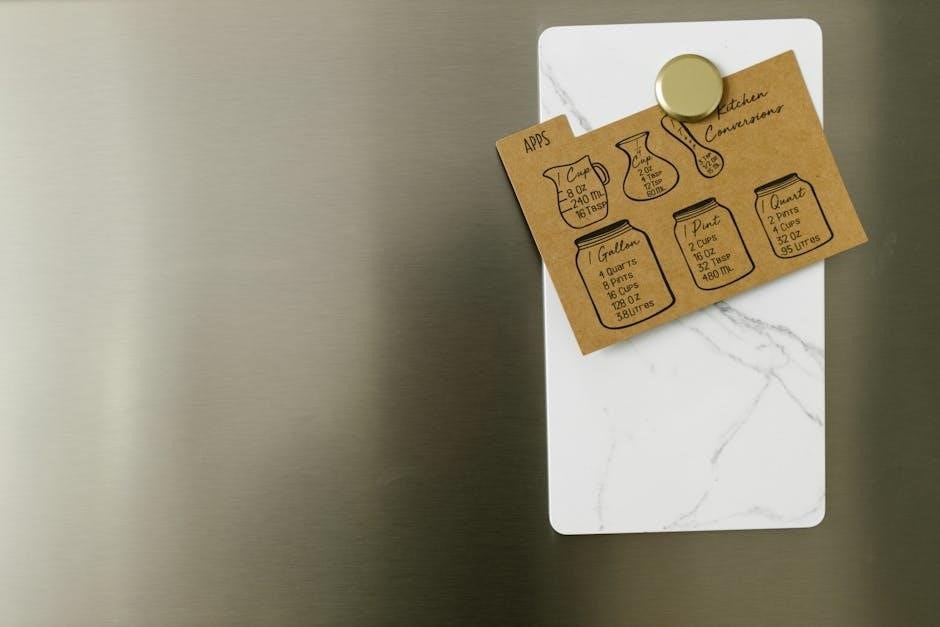Unit 4 Test Study Guide: Congruent Triangles
This comprehensive study guide covers essential concepts for the Unit 4 test on congruent triangles, including congruence theorems (SSS, SAS, ASA, AAS, HL), classifying triangles, real-world applications, and practice problems. Master these to confidently solve triangle congruence questions and related geometry problems.
Congruent triangles are triangles that are identical in shape and size. This means all corresponding sides and angles are equal. The concept of congruence is fundamental in geometry, as it allows us to compare and analyze triangles effectively.
To determine if two triangles are congruent, we use specific theorems and postulates such as SSS (Side-Side-Side), SAS (Side-Angle-Side), ASA (Angle-Side-Angle), AAS (Angle-Angle-Side), and HL (Hypotenuse-Leg) for right triangles. These methods provide a structured way to prove triangle congruence.
Understanding congruent triangles is essential for solving geometry problems, as it helps in identifying corresponding parts (CPCTC) and applying these properties to real-world scenarios. This section will introduce the basic principles of congruent triangles, laying the foundation for more advanced topics in the study guide.
By mastering these concepts, students will be able to classify triangles, prove congruence, and apply these skills to various geometric problems. This introduction sets the stage for exploring triangle congruence theorems, proofs, and practical applications in subsequent sections of the guide.
Triangle Congruence Theorems
Triangle congruence theorems provide the criteria to determine if two triangles are congruent. These theorems include:

- SSS (Side-Side-Side): If three sides of one triangle are congruent to three sides of another triangle, the triangles are congruent.
- SAS (Side-Angle-Side): If two sides and the included angle of one triangle are congruent to two sides and the included angle of another triangle, the triangles are congruent.
- ASA (Angle-Side-Angle): If two angles and the included side of one triangle are congruent to two angles and the included side of another triangle, the triangles are congruent.
- AAS (Angle-Angle-Side): If two angles and a non-included side of one triangle are congruent to two angles and a non-included side of another triangle, the triangles are congruent.
- HL (Hypotenuse-Leg): If the hypotenuse and one leg of a right triangle are congruent to the hypotenuse and one leg of another right triangle, the triangles are congruent.
These theorems are essential for proving triangle congruence and understanding the relationships between triangles. Each theorem provides a unique method to establish congruence, ensuring flexibility in different geometric scenarios. By mastering these theorems, students can confidently determine if two triangles are congruent and apply these principles to solve a variety of geometry problems. This section focuses solely on the theorems themselves, providing a clear foundation for further study and application.
Proving Triangles Congruent
Proving triangles congruent involves using one of the congruence theorems (SSS, SAS, ASA, AAS, HL) to show that two triangles have identical corresponding parts. To begin, identify the corresponding sides and angles between the triangles. Next, determine which theorem applies based on the given information. For example, if three sides are known to be congruent, use SSS. If two sides and the included angle are congruent, use SAS. Once the appropriate theorem is selected, write a step-by-step proof to demonstrate the triangles’ congruence.
- Start by stating the given information, such as congruent sides or angles.
- Apply the chosen theorem to establish congruence.
- Conclude by stating the triangles are congruent and specifying the corresponding parts.
Practicing various proofs will help solidify your understanding of how and when to apply each theorem. This skill is crucial for solving geometry problems and preparing for the unit test. By mastering the proof process, you’ll be able to confidently demonstrate the congruence of triangles in different scenarios. Regular practice with sample problems will enhance your proficiency in this area. This section focuses solely on the proof process, ensuring you can apply the theorems effectively.
Corresponding Parts of Congruent Triangles (CPCTC)

Corresponding Parts of Congruent Triangles (CPCTC) states that if two triangles are proven to be congruent, their corresponding sides and angles are also congruent. This means that every part of one triangle matches exactly with the corresponding part of the other triangle. For example, if triangle ABC is congruent to triangle DEF, then side AB corresponds to side DE, BC to EF, and AC to DF. Similarly, angle A corresponds to angle D, angle B to angle E, and angle C to angle F.
Understanding CPCTC is crucial for solving geometry problems, as it allows you to use the properties of congruent triangles to find missing angles or sides. It is often used after applying one of the congruence theorems (SSS, SAS, ASA, AAS, or HL) to establish triangle congruence. By identifying corresponding parts, you can make precise conclusions about the relationships between the triangles. This concept is essential for more advanced geometric proofs and applications. Regular practice with CPCTC will help you master its use in various problem-solving scenarios.
Real-World Applications
Congruent triangles have numerous practical applications in various fields, making them a fundamental concept in geometry. In construction, congruent triangles are used to ensure structural integrity, as they allow for precise measurements and symmetry in building designs. Engineers rely on congruent triangles to design bridges, ensuring that identical triangles on either side of the structure provide equal support and balance.
In physics, congruent triangles are essential for understanding forces and their distribution. For example, in collision analysis, congruent triangles help determine the direction and magnitude of forces acting on objects. Additionally, in art and design, congruent triangles are used to create symmetrical patterns and shapes, adding aesthetic appeal to designs.
Carpenters and woodworkers use congruent triangles to fit joints and align parts perfectly, ensuring durability and precision in their work. Understanding congruent triangles also aids in navigation and surveying, where precise angle and side measurements are critical for mapping and directional purposes. These real-world applications highlight the importance of mastering congruent triangles for problem-solving in diverse industries. Regular practice with these concepts will enhance your ability to apply them in practical scenarios.
Practice Problems
To master the concept of congruent triangles, it is essential to engage with a variety of practice problems. These problems will help solidify your understanding of congruence theorems and their applications.

Types of Problems to Expect:
- Proving Congruence: Given two triangles, use SSS, SAS, ASA, AAS, or HL to prove they are congruent. Ensure you label corresponding sides and angles correctly.
- Identifying Corresponding Parts: Using CPCTC, identify and justify the congruence of specific sides and angles in pairs of triangles.
- Solving for Missing Measures: Calculate missing side lengths or angle measures in congruent triangles using properties of congruence.
- Real-World Applications: Apply congruence theorems to solve practical problems, such as determining the height of a building or the length of a bridge support.
Tips for Success:

- Always label triangles clearly and mark known congruent parts.
- Use the converse of theorems cautiously and ensure conditions are met.
- Practice problems regularly to build confidence and speed.
Regular practice with these types of problems will help you approach the unit test with confidence and clarity.
Key Terms and Definitions
Understanding key terms is crucial for success on the Unit 4 test. Below are the essential definitions related to congruent triangles that you need to know:
- Congruent Triangles: Two triangles that have the same shape and size; their corresponding sides and angles are equal.
- SSS (Side-Side-Side): A theorem stating that if three sides of one triangle are congruent to three sides of another triangle, the triangles are congruent.
- SAS (Side-Angle-Side): A theorem stating that if two sides and the included angle of one triangle are congruent to two sides and the included angle of another triangle, the triangles are congruent.
- ASA (Angle-Side-Angle): A theorem stating that if two angles and the included side of one triangle are congruent to two angles and the included side of another triangle, the triangles are congruent.
- AAS (Angle-Angle-Side): A theorem stating that if two angles and a non-included side of one triangle are congruent to two angles and a non-included side of another triangle, the triangles are congruent.
- HL (Hypotenuse-Leg): A theorem specific to right triangles; if the hypotenuse and one leg of one right triangle are congruent to the hypotenuse and one leg of another right triangle, the triangles are congruent.
- CPCTC (Corresponding Parts of Congruent Triangles are Congruent): A principle stating that if two triangles are congruent, their corresponding parts (sides and angles) are also congruent.

Mastering these terms and their definitions will provide a strong foundation for solving problems and proving triangle congruence.

Test-Taking Tips
To excel on the Unit 4 test on congruent triangles, follow these strategies:
- Understand the question types: Familiarize yourself with multiple-choice, short-answer, and proof-based questions to allocate time effectively.
- Manage your time: Allocate 2-3 minutes per multiple-choice question and 5-7 minutes for proofs or detailed problems.
- Read carefully: Pay attention to specific congruence theorems (SSS, SAS, ASA, AAS, HL) and identify what is given and what needs to be proven.
- Use elimination: For multiple-choice questions, eliminate incorrect options based on known theorems or properties.
- Sketch diagrams: Drawing triangles can help visualize relationships between sides and angles, especially for proofs.
- Label correspondences: Clearly mark corresponding parts (CPCTC) to avoid confusion in congruent triangles.
- Check your work: Review calculations, angle measures, and congruence statements before moving to the next question.
By staying calm, working methodically, and applying these tips, you’ll be well-prepared to tackle the Unit 4 test on congruent triangles with confidence.



